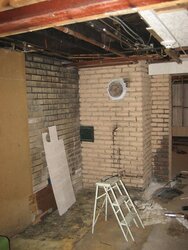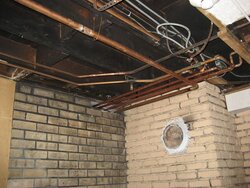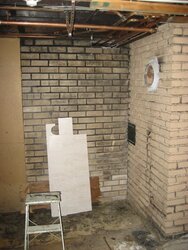Hello Everyone,
I recently moved my oil burner which freed up a chimney in my basement. I'm currently in the process of preparing the area that contained my boiler for a wood stove. I recently realized that the ceiling clearance does not meet the 84" required in the installation manual for the stove. I was planning on purchasing a Napoleon 1900. There doesn't appear to be an alcove option for this stove. The ceiling is currently open and I was planning on using a non-combustible material above it. The height will likely be about 77" or 78" above the floor. I attached some pictures. My mono-flow heating pipes and water supply for my oil burner are in the ceiling above where the stove will be located. I'm not sure if that's going to be an issue or not.
Can anyone recommend a stove that can be installed with approximately 77" ceiling clearance ? I need something that's reliable and can generate a lot of heat. My home is approximately 3200sq ft. I would also be interested in opinions/suggestions about the location, ceiling height, etc... Thank you very much .



I recently moved my oil burner which freed up a chimney in my basement. I'm currently in the process of preparing the area that contained my boiler for a wood stove. I recently realized that the ceiling clearance does not meet the 84" required in the installation manual for the stove. I was planning on purchasing a Napoleon 1900. There doesn't appear to be an alcove option for this stove. The ceiling is currently open and I was planning on using a non-combustible material above it. The height will likely be about 77" or 78" above the floor. I attached some pictures. My mono-flow heating pipes and water supply for my oil burner are in the ceiling above where the stove will be located. I'm not sure if that's going to be an issue or not.
Can anyone recommend a stove that can be installed with approximately 77" ceiling clearance ? I need something that's reliable and can generate a lot of heat. My home is approximately 3200sq ft. I would also be interested in opinions/suggestions about the location, ceiling height, etc... Thank you very much .




